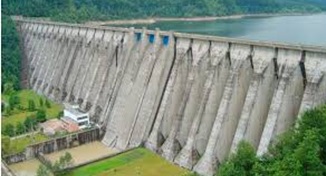By
Ghalndarzadeh A., Akbari N., Fakher A. from University of Tehran
ABSTRACT
Seismic behavior of quay walls is one of major concerns in earthquake geotechnical engineering field. Among different types of quay walls such as caisson and concrete block walls, deck and pile structures and anchored flexible walls the behavior of flexible walls looks more complicated. In the presented research, a series of shaking table tests were carried out in order to understand the seismic behavior of anchored flexible quay walls. The models were fully instrumented to monitor their behavior during shakings. Displacement of the wall, accelerations in the backfill, excess pore pressures in the soil, bending moment in the wall and tension of tie-rods were measured. By making different relative densities for the backfill and the foundation, different failure modes were observed. It is concluded that the performance of an anchored quay wall is strongly influenced by the occurrence of liquefaction.
Keywords: Anchored flexible quay wall, liquefaction, softening, failure modes
Read More

